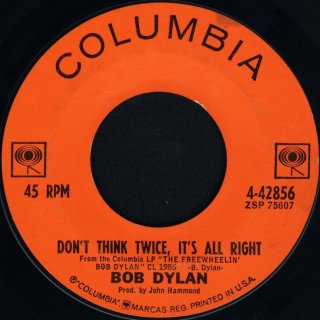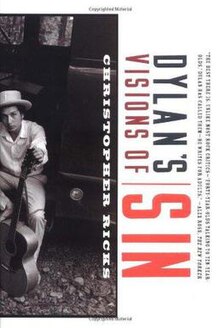
John Keats was an English Romantic poet. He was one of the main figures of the second generation of Romantic poets, along with Lord Byron and Percy Bysshe Shelley, despite his works having been in publication for only four years before his death from tuberculosis at the age of 25.
Lyrics are words that make up a song, usually consisting of verses and choruses. The writer of lyrics is a lyricist. The words to an extended musical composition such as an opera are, however, usually known as a "libretto" and their writer, as a "librettist". The meaning of lyrics can either be explicit or implicit. Some lyrics are abstract, almost unintelligible, and, in such cases, their explication emphasizes form, articulation, meter, and symmetry of expression. Rappers can also create lyrics that are meant to be spoken rhythmically rather than sung.

Blonde on Blonde is the seventh studio album by American singer-songwriter Bob Dylan, released as a double album on June 20, 1966 by Columbia Records. Recording sessions began in New York in October 1965 with numerous backing musicians, including members of Dylan's live backing band, the Hawks. Though sessions continued until January 1966, they yielded only one track that made it onto the final album—"One of Us Must Know ". At producer Bob Johnston's suggestion, Dylan, keyboardist Al Kooper, and guitarist Robbie Robertson moved to the CBS studios in Nashville, Tennessee. These sessions, augmented by some of Nashville's top session musicians, were more fruitful, and in February and March all the remaining songs for the album were recorded.
Negative capability is a phrase first used by Romantic poet John Keats in 1817 to explain the capacity of the greatest writers to pursue a vision of artistic beauty even when it leads them into intellectual confusion and uncertainty, as opposed to a preference for philosophical certainty over artistic beauty. The term has been used by poets and philosophers to describe the ability to perceive and recognise truths beyond the reach of consecutive reasoning.

Renaissance humanism was a revival in the study of classical antiquity, at first in Italy and then spreading across Western Europe in the 14th, 15th, and 16th centuries. Contemporary use of the term humanism is consistent with the historical use prominent in that period, while Renaissance humanism is a retronym used to distinguish it from later humanist developments. During the Renaissance period most humanists were religious, so their concern was to "purify and renew Christianity," not to do away with it. Their vision was to return ad fontes to the simplicity of the New Testament, bypassing the complexities of medieval theology. Today, by contrast, the term humanism has come to signify "a worldview which denies the existence or relevance of God, or which is committed to a purely secular outlook."

James Ingram Merrill was an American poet. He was awarded the Pulitzer Prize for poetry in 1977 for Divine Comedies. His poetry falls into two distinct bodies of work: the polished and formalist lyric poetry of his early career, and the epic narrative of occult communication with spirits and angels, titled The Changing Light at Sandover, which dominated his later career. Although most of his published work was poetry, he also wrote essays, fiction, and plays.

"If—" is a poem by English Nobel laureate Rudyard Kipling (1865–1936), written circa 1895 as a tribute to Leander Starr Jameson. It is a literary example of Victorian-era stoicism. The poem, first published in Rewards and Fairies (1910), ch. 'Brother Square-Toes,' is written in the form of paternal advice to the poet's son, John.

Time Out of Mind is the 30th studio album by American musician Bob Dylan, released on September 30, 1997, through Columbia Records. It was released as a single CD as well as a double studio album on vinyl, his first since Self Portrait in 1970.
"The Lonesome Death of Hattie Carroll" is a topical song written by the American musician Bob Dylan. Recorded on October 23, 1963, the song was released on Dylan's 1964 album The Times They Are a-Changin' and gives a generally factual account of the killing of a 51-year-old African-American barmaid, Hattie Carroll, by the 24-year-old William Devereux "Billy" Zantzinger, a young man from a wealthy white tobacco farming family in Charles County, Maryland, and of his subsequent sentence to six months in a county jail, after being convicted of assault.
Sir Christopher Bruce Ricks is a British literary critic and scholar. He is the William M. and Sara B. Warren Professor of the Humanities at Boston University (US), co-director of the Editorial Institute at Boston University, and was Professor of Poetry at the University of Oxford (UK) from 2004 to 2009. He is the immediate past-president of the Association of Literary Scholars and Critics. He is known as a champion of Victorian poetry; an enthusiast of Bob Dylan, whose lyrics he has analysed at book length; a trenchant reviewer of writers he considers pretentious ; and a warm reviewer of those he thinks humane or humorous. Hugh Kenner praised his "intent eloquence", and Geoffrey Hill his "unrivalled critical intelligence". W. H. Auden described Ricks as "exactly the kind of critic every poet dreams of finding". John Carey calls him the "greatest living critic".
Campbell McGrath is an American poet. He is the author of nine full-length collections of poetry, including Seven Notebooks, Shannon: A Poem of the Lewis and Clark Expedition, and In the Kingdom of the Sea Monkeys.

Philip Levine was an American poet best known for his poems about working-class Detroit. He taught for more than thirty years in the English department of California State University, Fresno and held teaching positions at other universities as well. He served on the Board of Chancellors of the Academy of American Poets from 2000 to 2006, and was appointed Poet Laureate of the United States for 2011–2012.
"Visions of Johanna" is a song written and performed by Bob Dylan on his 1966 album Blonde on Blonde. Several critics have acclaimed "Visions of Johanna" as one of Dylan's highest achievements in writing, praising the allusiveness and subtlety of the language. Rolling Stone included "Visions of Johanna" on their list of the 500 Greatest Songs of All Time. In 1999, Sir Andrew Motion, Poet Laureate of the United Kingdom, listed it as the greatest song lyric ever written.
"Sad Eyed Lady of the Lowlands" is a song by Bob Dylan. First released as the closing track on Dylan's 1966 album Blonde on Blonde, the song lasts 11 minutes and 22 seconds, occupying the entire side four of the double album. Dylan has revealed that the song was written about his future wife, Sara Lownds.

"You Don't Know Me" is a song written by Cindy Walker based on a title and storyline given to her by Eddy Arnold in 1955. "You Don't Know Me" was first recorded by Arnold that year and released as a single on April 21, 1956 on RCA Victor. The best-selling version of the song is by Ray Charles, who took it to #2 on the Billboard Hot 100 chart in 1962, after releasing the song on his #1 album Modern Sounds in Country and Western Music. The first version of the song to make the Billboard charts was by Jerry Vale in 1956, peaking at #14 on the pop chart. Arnold's version charted two months later, released as an RCA Victor single, 47-6502, backed with "The Rockin' Mockin' Bird", which reached #10 on the Billboard country chart. Cash Box magazine, which combined all best-selling versions at one position, included a version by Carmen McRae that never appeared in the Billboard Top 100 Sides listing.

The Miraculous Medal, also known as the Medal of Our Lady of Grace, is a devotional medal, the design of which was originated by Saint Catherine Labouré following her apparitions of the Blessed Virgin Mary in Rue du Bac, Paris, France. It was made by goldsmith Adrien Vachette.

"Don't Think Twice, It's All Right" is a song written by Bob Dylan in 1962, recorded on November 14 that year, and released on the 1963 album The Freewheelin' Bob Dylan and as a single.

"Not Dark Yet" is a song by Bob Dylan, recorded in January 1997 and released in September that year on his album Time Out of Mind. It was the first single from the album.
"Love Minus Zero/No Limit" is a song written by Bob Dylan for his fifth studio album Bringing It All Back Home, released in 1965. Its main musical hook is a series of three descending chords, while its lyrics articulate Dylan's feelings for his lover, and have been interpreted as describing how she brings a needed zen-like calm to his chaotic world. The song uses surreal imagery, which some authors and critics have suggested recalls Edgar Allan Poe's "The Raven" and the biblical Book of Daniel. Critics have also remarked that the style of the lyrics is reminiscent of William Blake's poem "The Sick Rose".
"Sugar Baby" is a song written by Bob Dylan, released in 2001 as the 12th and final track on his "Love and Theft" album. It is a slow-tempo ballad in which the song's narrator describes a life of epic heartbreak and regret.











